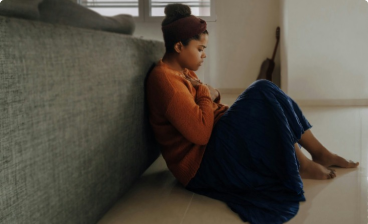Getting Periods after pregnancy : is it possible?
After a woman is pregnant normally she no longer gets her period. But girls who are pregnant can have other bleeding problems that might look like a period. For example, there can be a small amount of blood flow when a fertilized egg implants in the uterus of the maternal body medical experts call this implantation bleeding. It usually happens around the same time a girl would normally get her regular period.
Other causes that can also cause bleeding, like a miscarriage or an ectopic pregnancy, generally occur when the fertilized egg implants someplace other than in the uterus while An ectopic pregnancy is a medical emergency.
If you think you might be pregnant and have pain or bleeding reach out to your doctor right away. If you are not sure if you are pregnant see a doctor or you can visit a health clinic like Planned Parenthood, or use a home pregnancy kit.
If you use a home pregnancy test kit and the results are negative but the signs point you to being pregnant like a missed or late period, breast tenderness, or feeling sick or throwing up, see a doctor or go to a health clinic. If a home pregnancy test is positive, see a health care provider as soon as possible to confirm the test results and get good care for you and your baby.
Although it is somewhere possible for women to experience some bleeding during pregnancy this will surely not be due to their menstrual cycle.
Some women also do not have any periods while Breastfeeding period also. However, they may still begin to ovulate again soon after their delivery. Therefore many doctors recommend some form of birth control measures while a woman is breastfeeding if she does not wish to get pregnant.
The menstrual cycle occurs mainly to facilitate pregnancy. The cycle begins on the first day of a person’s period and ends on the first day of the following time period.
The next step is Ovulation when the ovary releases an egg that occurs midway through the cycle.
An egg is only viable for about 12–24 hours after it ovulates. If sperm cells are present and able to fertilize the egg in that period of time the egg will implant itself in the uterus resulting in pregnancy.
If there is no fertilization the menstruation will occur, and the body will shed the uterine lining along with blood so that it can begin making a new one for the next cycle.
Causes of bleeding during the first trimester
Between 15 and 25 percent of women spot blood during early pregnancy. Some of the causes are:
Implantation bleeding
Changes in the cervix
Infection
Molar pregnancy (abnormal mass fertilizes instead of a fetus)
Ectopic pregnancy (a pregnancy outside of the uterus)
Early signs of a miscarriage
Implantation bleeding
This mainly happens in the earliest stages of pregnancy. At this point, you likely haven’t gotten any pregnancy test yet. This type of bleeding occurs when the fertilized egg gets implanted into the uterus.
Implantation bleeding is sometimes misunderstood as a period, though the bleeding is usually light or just spotting which lasts for a few days.
Shortly after pregnancy, you might also experience some cervical changes. Unless there’s an infection, this isn’t often causing concern For women’s bodies.
Other causes
Other types of early bleeding that can indicate an emergency medical issue often include:
Infections
Ectopic pregnancy
Molar pregnancy
Miscarriage
These can also be sometimes accompanied by :
Severe cramps or abdominal pain
Back pain
Faintness or losing consciousness
Fatigue
Shoulder pain
Fever
Vaginal discharge changes
Uncontrollable nausea and vomiting















































